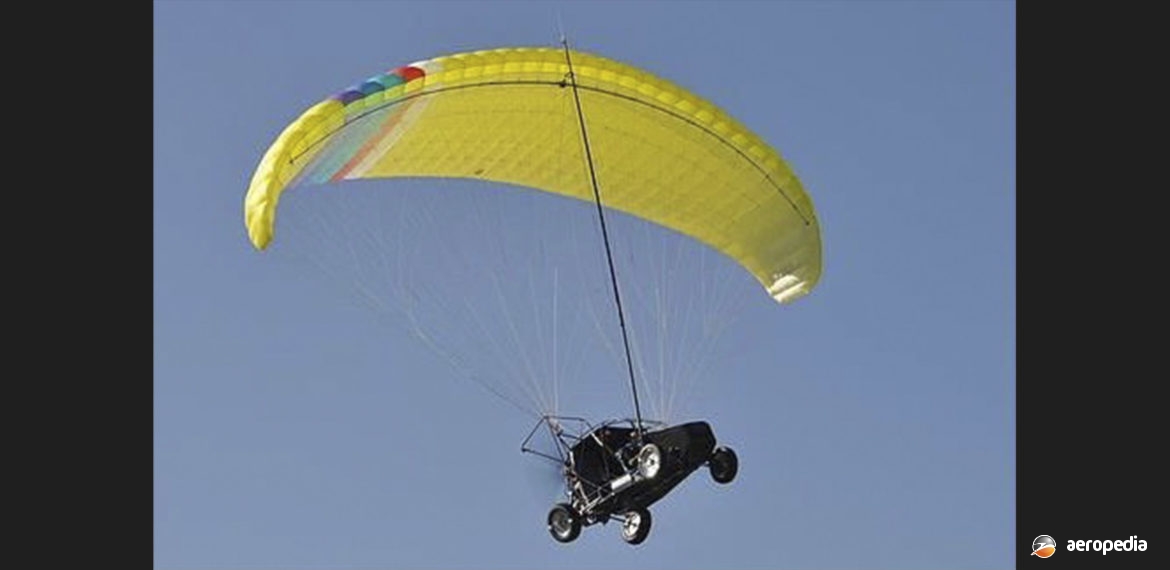Photograph:
I-Tec Maverick during testing in the United States in 2012 (I-Tec)
Country of origin:
United States of America
Description:
Two-seat sport aircraft
Power Plant:
One 127 kw (170 hp) Subaru 24-litre four-cylinder horizontally-opposed air-cooled engine
Specifications:
- Wingspan: 10.97 m (36 ft)
- Max speed: 64 km/h (40 mph)
- Take-off roll: 91 m (300 ft)
- Fuel capacity: 53 litres (11.6 Imp gals)
- Max payload weight: 150 kg (330 lb)
- Loaded weight: 449 kg (989 lb)
History:
On 28 September 2010 the FAA in the United States issued a Light Sport Aircraft Certificate to the Maverick Sport light aircraft, this being a new variant of what had become known as the Flying Dune Buggy, a flying car developed by Steven Saint and his partners at Indigenous People’s Technology and Education Centre (I-Tec) at Dunellon in Florida. The aircraft also received a road licence plate from the Florida Department of Transportation to be able to travel on highways. This was described as the second such vehicle to receive these certifications, the previous being the Taylor Aerocar in 1956, at that time the approval being granted by the Civil Aviation Authority, this body later becoming the FAA in the United States.
Rather than seek Highway Administration Certification for the vehicle, which required crash testing, etc, it was licensed as a kit-car and could be licensed in most American States. The FAA considered the machine to be a powered parachute. The prototype was a four-seat vehicle but to overcome licensing guidelines it had seating for three in the air and two on the ground, the other seats being necessary to stow the parachute. Engines ranging from 97 kw to 186 kw (130 hp to 250 hp) could be installed but most were fitted with Subaru units, the 104 kw (140 hp) 2.2-litre EJ-22 or the 127 kw (170 hp) unit driving a five-blade pusher propeller 1.9 m (75 in) in diameter. A prototype (N91MV) was displayed at the Experimental Aircraft Association (EAA) AirVenture event at Oshkosh, Wisconsin, in 2011 and more than 120 orders were placed.
I-Tec was a non-profit organisation that focused on humanitarian outreach frontier areas of the world and missionary work. The machine was developed for operation in these areas. It could be fitted with pontoons for operations from water. The wing-shaped parachute was deployed on a mast raised to a height of 8.2 m (27 ft) when in flying mode and stored on the top of the car when it was being used on the road. Flying was similar to driving on the road, by way of the steering wheel, the accelerator being used to climb. The machine would not spin or stall and the parachute could be deployed in five minutes.
Purchasers were expected to come from search-and-rescue crews, and farmers. It could be used as a novelty light aircraft. It had a portable air-conditioning system, I-pod hook up and aviation instrumentation. The machine won the 2009 Popular Mechanics Breakthrough Award. It had a Power Take Off transmission that diverted power to the propeller or to the wheels.
First of the type in this region became VH-BFO4 (c/n ME-7002 – ex N93MV), registered on 3 October 2012 to Ywan Medical Ships of West End, QLD, being fitted with a 142 kw (190 hp) fuel-injected 2.5-litre Subaru engine. This machine was withdrawn from use on 23 December 2015.

